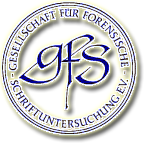



"Technically produces writing"
Guideline 3.00
Specialist criteria for ordinary membership
Prerequisites for membership in the society:
In accordance with the society's goals as defined in its bylaws, the status of an expert for forensic examination of technically produced writing (GFS) should provide external and internal proof of the fact that he possesses the specific scientific qualifications for this discipline and is authorized to submit suitable expert testimony as an expert witness before court. Among other things, this presupposes that the expert complies with the necessary general and special requirements and undertakes to contribute to the furtherance of this discipline both in the area of research and in practical application by means of regular study of the relevant literature and by taking part in suitable further training.
General requirements
In addition to subject-related skills, the expert should be able to demonstrate that he possesses interdisciplinary knowledge in the following areas:
· Civil and criminal court procedures to the extent that this concerns the expert's activities.
· Statutory stipulations and other public rules for the appointment, retention and deployment of the expert and the rendering of his reports as well as his rights, obligations and liability.
· Basis for and structure of expert reports.
· Invoicing of expenses, remuneration for expert.
· Detection of errors in the form and content of reports and steps to check these.
· Examinations in related forensic areas and case-by-case possibilities for joint activities.
· Techniques for systematic study of literature and methodical requirements for understanding specialist literature and for performing independent examinations.
The expert for examinations of technically produced writing is qualified to render reports on all kinds of typewritten and copied documents to determine their authenticity, to identity the writer and to assess the conditions under which the documents arose as expert testimony before courts of law. This particularly requires detailed knowledge of the following subsegments of the discipline:
· How the various typewriter, printer and copying systems work.
· Identification of the typewriter, printer and copying system.
· Identification of the typewriters, printers and copiers.
· Examination of fax copies.
· Evaluation of characteristics for identifying equipment.
· Methods of computer-based examinations and comparisons of technically produced writing.
· Criteria for determining the age of technically produced writing.
· Techniques for measuring technically produced characters, e.g. to determine the number of duplicates.
· Special physical/technical examinations and their practical implementation (e.g. for distinguishing writing).
· Text identification on typing and correction tapes.
· Possibilities and limits for using copier products such as the duplicates of machine-written documents.
· Identification of the originators of technically produced writing (e.g. writing standards, individual design).
· Requirements of the writing material and information required to determine related facts of relevance for examinations of technical writing.
The following monographs, collections, individual publications and journals are particularly useful for an independent study of the specialist literature:
Literature on general requirements1:
Bayerlein, W. (Hrsg.). (1990). Praxishandbuch Sachverständigenrecht. München: Beck. (BRD)
Bleutge, P. (1992). Gesetz über die Entschädigung von Zeugen und Sachverständigen. Kommentar. (2. Auflage). Essen: Verlag für Wirtschaft und Verwaltung. Hubert Wingen. (BRD)
Jessnitzer, K., fortgeführt von Frieling, G. (1992). Der gerichtliche Sachverständige. Ein Handbuch für die Praxis. (10. neu bearbeitete Auflage). Köln: Heymanns. (BRD)
Kube, E., Störzer, H. U. & Timm, K. J. (Hrsg.). (1992 u. 1994). Kriminalistik. Handbuch für Praxis und Wissenschaft, Band I u. II. Stuttgart: Boorberg.
Schünemann, B. (1984). Aktuelle strafprozeßrechtliche Probleme des Schriftgutachtens. Mannheimer Hefte für Schriftvergleichung, 10, 3-21.
Literature on "Technically produced writing"
Basic literature
Atteson, R. G. (1995). Introduction to Document Image Processing Techniques. Boston: Artech House.
Baier, P. E. (1996). Maschinenschreiben und forensische Urheberidentifizierung. In: Günther, H. & Ludwig, O. (Hg.): Schrift und Schriftlichkeit. Berlin-New York: De Gruyter.
Ellen, D. (1997). The Scientific Examination of Documents. London: Taylor & Francis.
Hecker, M. R. (1993). Forensische Handschriftenuntersuchung. Heidelberg: Kriminalistik Verlag.
Hilton, O. (1982). Scientific Examination of Questioned Documents. New York: Elsevier. (insbes. Kap. 8 - 17).
Haas, J. (1972): Atlas der Picaschriften. Stuttgart: Selbstverlag.
Haas, J. & Haas, B. (1986): Atlas der Schreibmaschinenschriften. Stuttgart: Selbstverlag.
Further contributions are contained in "Mannheimer Bibliographie für Schriftvergleichung und Urkundenprüfung"
1) The titles designated by the letters "BRD" are primarily of interest for members based in Germany. Members from other countries should refer to the literature of relevance for their particular jurisdiction.












